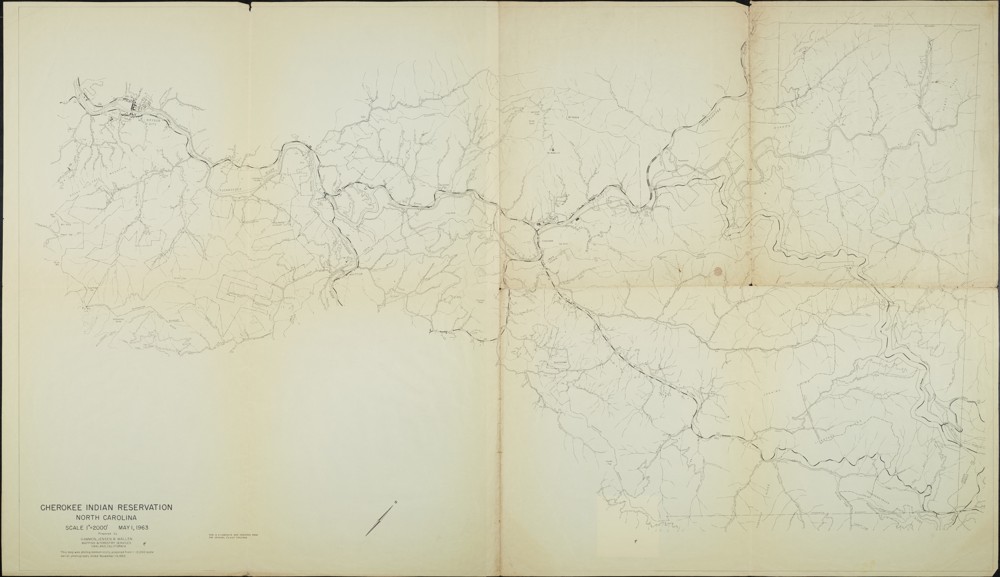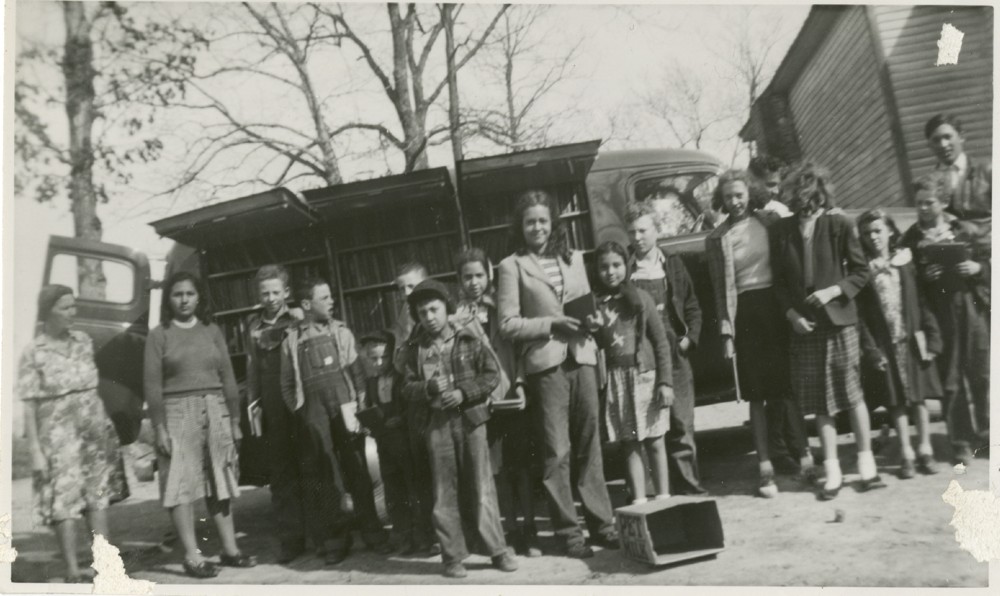DigitalNC is excited to introduce a new primary source teaching set on Native Americans in North Carolina. While Native Americans have long inhabited the land that now makes up North Carolina, this set focuses on the group’s history from 1900 to the present day.
This set is composed of written (newspaper articles, poetry, theatre playbills, a school catalog) and visual materials (photographs, maps) sourced from our partners. Other sections of this set include background information, context statements, discussion questions, a timeline, and helpful outside resources. Here’s a closer look at the primary source set on Native Americans in North Carolina, 1900 to the Present:
Native Americans in North Carolina, 1900 to the Present
Time Period: 1920-2019
Today, North Carolina is home to eight state-recognized tribes, which include the Coharie tribe, the Eastern Band of Cherokee Indians, the Haliwa-Saponi tribe, the Lumbee tribe, the Meherrin Indian tribe, the Occaneechi Band of the Saponi Nation, the Sappony, and the Waccamaw Siouan tribe. Only one of these groups, the Cherokee, has received full federal recognition. While the Lumbee tribe received partial recognition in the Lumbee Act of 1956, they have since worked towards gaining full recognition through petitioning and forming committees in hopes of receiving the same benefits and funds as the Eastern Band of Cherokee.
The 20th century brought another source of change for Native Americans: education. Beginning in the mid-1800s, Native children in North Carolina and across the country were forced to attend segregated boarding schools led by white instructors. Students were banned from participating in their cultural practices and punished for speaking Native American languages, like Cherokee. In recent years, however, Native Americans like Robert Bushyhead have made efforts to protect the language by creating Cherokee courses at different North Carolina colleges and universities.
Just as Bushyhead worked to protect the Cherokee language, so too have other Native Americans worked to preserve their cultures and practices. While Native Americans across North Carolina have faced changes and challenges from the 20th century on, their communities have created poetry and art about their cultures, established Native American clubs on college campuses, and have shared and celebrated their practices in events like the American Indian Heritage Celebration.
Teachers, students, researchers, and others interested in learning more about Native Americans in North Carolina from 1900 to the present can find the primary source set on our resources page. If you like to provide feedback on this set or others, please contact us here.


